Lily and I went out to look at houses last weekend, and I couldn’t help but take some photos of cool rocks I saw along the route. See if you can identify / name / interpret all four:
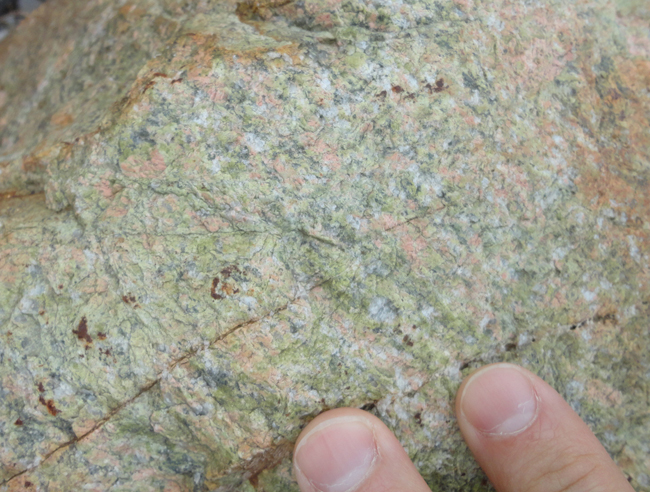
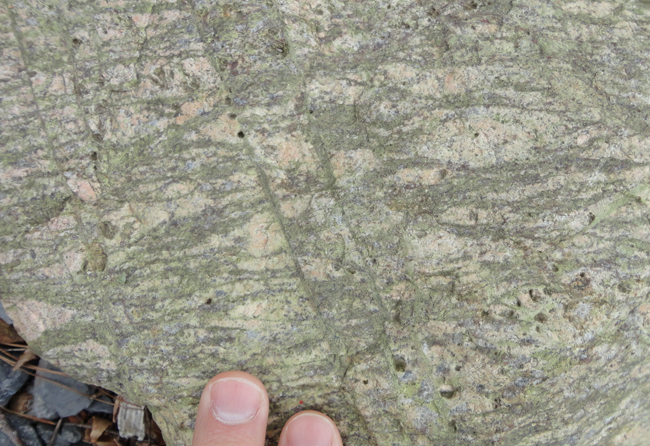
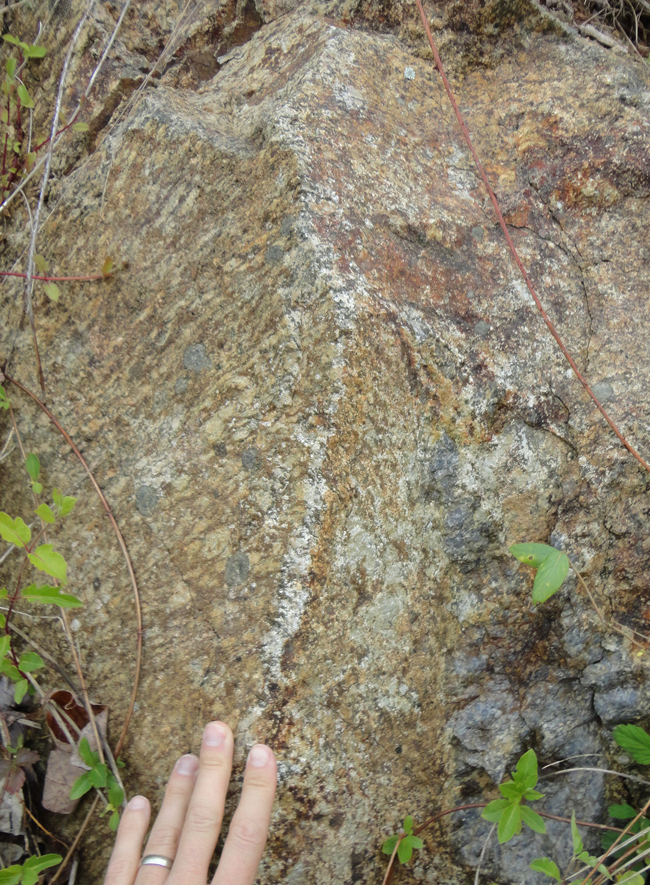
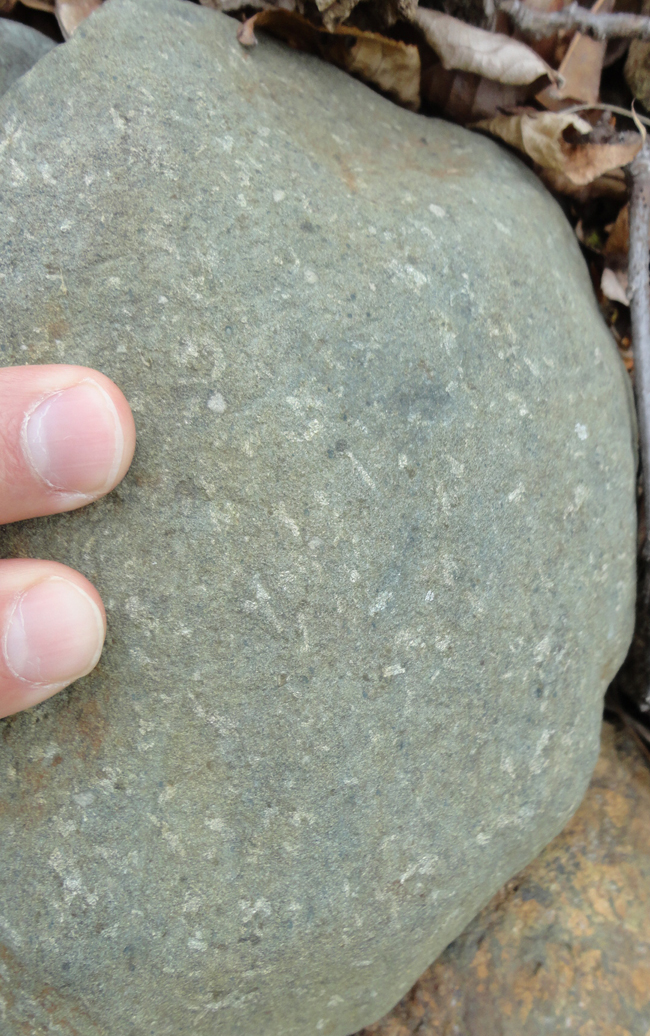
And here’s a bonus: Can anyone tell me what kind of bird built this diminutive nest?
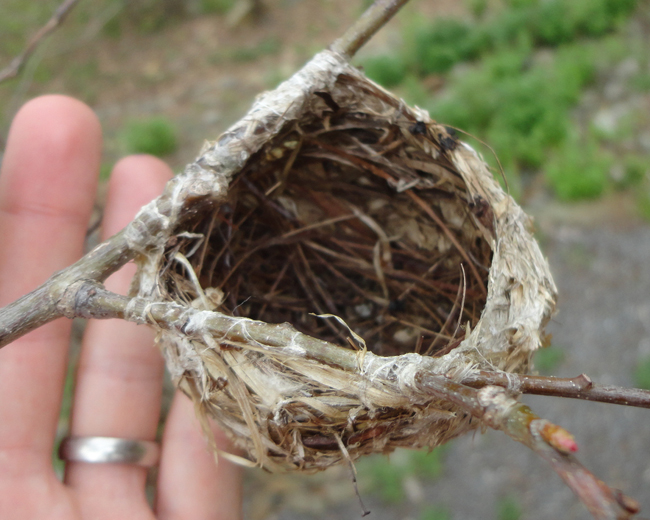

That first one looks like a unakite.
Correct you are – an eye-catching color scheme!
ok…#1 is unakite. #2 is unakite again with maybe some brittle deformation going on? #3 looks like some Blue Ridge basement complex (or maybe some of the Robertson River Igneous Suite) and #4 is a porphyritic Catoctin greenstone. I’m guessing a vireo on the nest.
Good job, Troy. Yes, I’d say you’re about right on all fronts (although I don’t know about the bird nest).
Basement complex galore exposed in the Browntown Valley, and a bit of Catoctin in the float, too. Kept my eye out for Skolithos in the Antietam quartzite float, but didn’t see any.
I think the first one (#1) is unakite, which is an altered granite composed of pink orthoclase feldspar, green epidote and generally colorless quartz. The second one (#2) is ductilely deformed rock formed by the shear strain, in ductile fault zone. I can see the eye-shaped features and some faulting going on. The third (#3) rock is some metamorphic rock, which based on the features undergone some shearing as well. . The fourth rock (#4) is greenstone with some amygdules?
I would think that the bird that this diminutive nest is Robin.
It is a vireo nest. They build distinctive cup nests in branch forks.
Well, no sense in repeating the answers for the rocks…even though I got 3 out of 4…but the nest does look a lot like the hummingbird nests we get here…
I got that the first one was granite altered with epidote, but this is my first exposure to the word Unakite.
Something new every day!
the first two look like a granite saussuritized, where the plagioclase phase is transformed to epidote group. I’ve never heard about Unakite. What is it composed by?
Yes: green epidote and pink K-spar (often accompanied by blue quartz) are the typical mineral constituents of this altered granitoid.